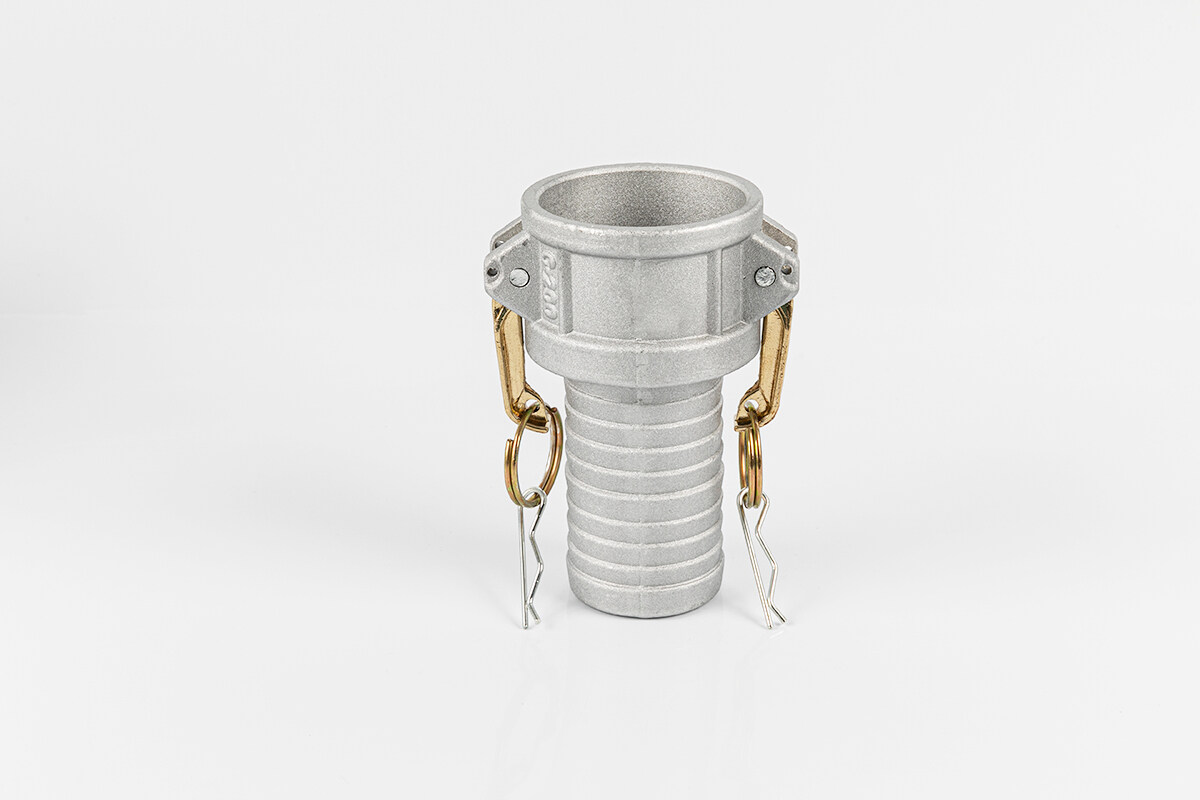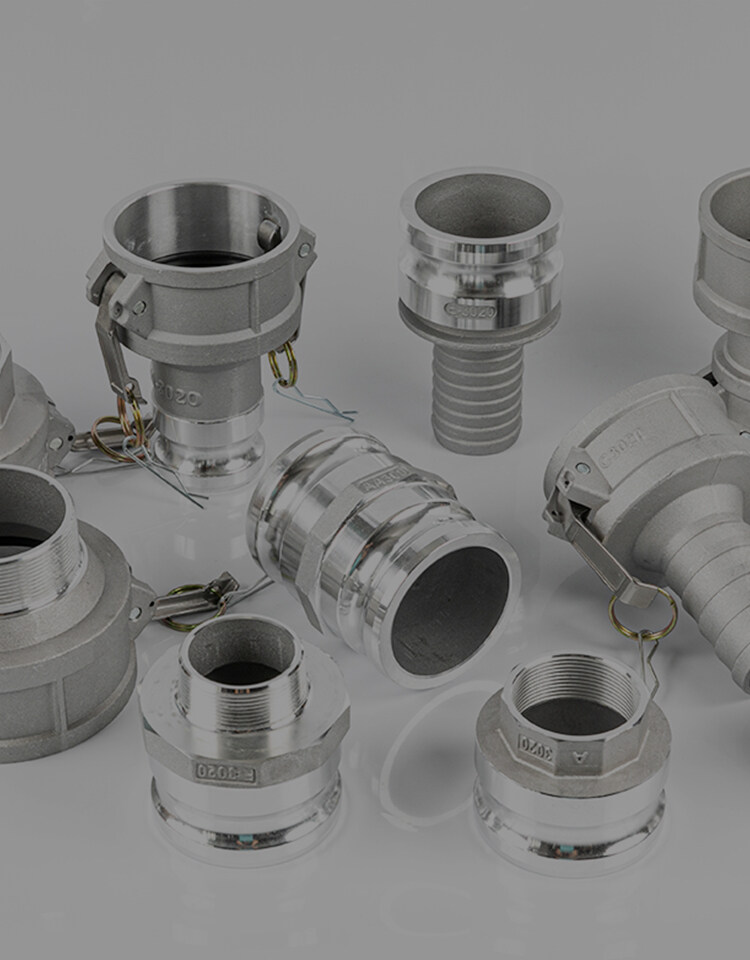Email format error
Email cannot be empty
Email already exists
6-20 characters(letters plus numbers only)
The password is inconsistent
Email format error
Email cannot be empty
Email does not exist
6-20 characters(letters plus numbers only)
The password is inconsistent

News
Here, you can describe a piece of text you want to express

The Comprehensive Guide to Cam and Groove Fittings: Applications, Varieties, and Installation Tips
Cam and groove fittings, also known as camlock fittings, are a staple in the fluid transfer industry, offering a reliable and easy-to-use solution for connecting and disconnecting hoses and pipes. These fittings are designed for quick and secure coupling without the need for tools, making them ideal for applications where frequent changes of hoses are required. In this comprehensive guide, we will delve into the world of cam and groove fittings, exploring their applications, the different types available, and how to select the right size and type for your needs.
Understanding Cam and Groove Fittings:
The fittings consist of a male (adapter/plug) and a female (coupler/socket) that connect with each other. The female end has two cam arms that lock into place with the male end’s groove when the arms are closed. This simple yet effective mechanism ensures a tight seal that can handle a variety of substances, from water and oil to chemicals and powders.
Applications of Cam and Groove Fittings:
Cam and groove fittings, with their quick connect and disconnect capabilities, serve a multitude of industries, each with its unique requirements and challenges. Here’s a closer look at how these fittings are utilized across various sectors:
Agriculture: In the agricultural industry, they are used for irrigation systems, transferring water to fields, and handling pesticides and fertilizers. The ease of connecting and disconnecting hoses is vital for moving equipment and changing water sources quickly.
Chemical Processing: The chemical industry relies on the fittings for safe and efficient transfer of chemicals. Due to the corrosive nature of many chemicals, fittings made of materials like stainless steel or polypropylene are often used to resist chemical damage.
Petroleum: In the petroleum sector, they are essential for loading and unloading oil from tankers, refueling operations, and managing waste oil. The secure seal is crucial to prevent spills and leaks of hazardous materials.
Pharmaceuticals: The pharmaceutical industry requires sterile and contaminant-free environments. The fittings made of high-grade stainless steel are used for their ability to be cleaned easily and maintain the purity of medicinal products.
Water Treatment: For water treatment facilities, the fittings facilitate the movement of water and treatment chemicals throughout the plant. They are valued for their durability and the ability to withstand various temperatures and pressures.
Selecting the Right Cam and Groove Fitting:
Choosing the appropriate Cam and Groove fitting is critical for ensuring a safe and efficient operation. Here are the factors to consider:
Material: The material of the Cam and Groove fitting should be selected based on the fluid being transferred. For example:
Aluminum: Lightweight and economical, suitable for water and petroleum products.
Stainless Steel: Highly resistant to corrosion, ideal for chemicals and pharmaceuticals.
Brass: Good for water systems and some chemicals, where corrosion is not a significant concern.
Polypropylene: Excellent for acidic or basic solutions, often used in agricultural and chemical processing.
Size: The size of the Cam and Groove fitting must correspond to the hose or pipe diameter to ensure a proper fit. Using the AN (Army-Navy) hose fitting sizes, which are standardized sizes in the industry, helps in selecting the correct fitting. These sizes are denoted by dash numbers (-4, -6, -8, etc.) and are essential to match for compatibility and to prevent leaks.
Pressure Rating: The working pressure of the system should be within the pressure rating of the Cam and Groove fitting. Exceeding the pressure rating can lead to fitting failure and potential safety hazards.
Temperature Range: The temperature of the fluid should be within the temperature range that the fitting material can withstand. Some materials can handle higher temperatures without deforming or losing integrity.
Compatibility: Ensure that the fittings are compatible with any AN hose fittings and adapters you plan to use. Incompatibility can lead to improper seals and the risk of disconnection under pressure.
Types of Cam and Groove Fittings:
Cam and groove fittings are categorized into several types, each identified by a letter designation from A to F, and additional types including DC (Dust Cap) and DP (Dust Plug) for closing off the ends. Here’s a detailed look at each type:
Type A (Adapter x Female Thread): This type has a male grooved adapter on one end and a female National Pipe Thread (NPT) on the other. It’s commonly used to thread into a female NPT and allows a hose with a Cam and Groove coupler to be connected.
Type B (Coupler x Male Thread): Featuring a female cam coupler on one end and a male NPT thread on the other, this type is often screwed into a female NPT fitting, allowing a hose with a Cam and Groove adapter to be connected.
Type C (Coupler x Hose Shank): This type has a female cam coupler on one end and a hose shank on the other, designed to be inserted into a hose and secured with a clamp or crimped ferrule.
Type D (Coupler x Female Thread): Similar to Type B, this type has a female cam coupler but with a female NPT thread. It can be threaded onto a male NPT fitting, allowing connection to a hose with a Cam and Groove adapter.
Type E (Adapter x Hose Shank): This type has a male grooved adapter on one end and a hose shank on the other. It’s designed to be inserted into a hose and secured similarly to Type C.
Type F (Adapter x Male Thread): With a male grooved adapter on one end and a male NPT thread on the other, this type is used to screw into a female NPT fitting, allowing connection to a hose with a Cam and Groove coupler.
Type DC (Dust Cap): Used to cover the adapter end of the Cam and Groove fitting to prevent dust, dirt, and insects from entering the system when not connected.
Type DP (Dust Plug): Used to plug the coupler end of the Cam and Groove fitting for the same protective reasons as the Dust Cap.
Cam and Groove Fitting Sizes and Compatibility:
Cam and groove fittings are available in a range of sizes to accommodate various hose diameters and flow requirements. The sizes are typically measured in inches, and common sizes include:
½ inch
¾ inch
1 inch
1 ½ inches
2 inches
3 inches
4 inches
6 inches
When selecting a Cam and Groove fitting, it’s crucial to match the fitting size with the corresponding AN hose fitting sizes. AN (Aerospace Standard) sizes are denoted by a dash number, which corresponds to the hose’s inner diameter in sixteenths of an inch. For example, an AN4 fitting would fit a hose with an inner diameter of 4/16 or 1/4 inch.
To ensure a secure and leak-free connection, the following considerations should be made:
Compatibility: Verify that the Cam and Groove fitting type matches the application and the AN hose fittings and adapters you intend to use. Incompatibility can lead to leaks or disconnection under pressure.
Sealing: Check that the gaskets and seals within the the fittings are compatible with the fluid being transferred. Different materials, such as Buna-N, Viton, or PTFE, offer varying levels of chemical resistance.
Pressure Rating: Ensure that the Cam and Groove fitting’s pressure rating meets or exceeds the system’s maximum operating pressure to maintain integrity under working conditions.
Installation Tips for Cam and Groove Fittings:
Proper installation of cam and groove fittings is essential to ensure a leak-free system and to prevent accidents. Here are detailed steps and tips for a successful installation:
Gasket Inspection: Before installation, inspect the gasket in the female coupler. It should be free from damage, properly seated, and compatible with the fluid being transferred. A damaged or improperly seated gasket can cause leaks.
Lubrication: If necessary, apply a thin layer of compatible lubricant to the gasket to facilitate a smooth connection, especially if the gasket is new or dry.
Alignment: Carefully align the male adapter with the female coupler. Misalignment can damage the fittings and prevent a secure connection.
Insertion: Gently insert the male adapter into the female coupler. Do not use excessive force, as this could damage the fittings or the gasket.
Closing the Cam Arms: Once the male adapter is fully inserted, close the cam arms simultaneously in a downward motion to lock the fitting in place. The arms should close smoothly without resistance. If the arms do not close easily, double-check the alignment and size of the fittings.
Final Inspection: After the cam arms are locked, give a gentle tug to ensure the connection is secure. Check around the connection for any signs of gaps or misalignment.
Pressure Test: Before full operation, perform a pressure test to ensure the connection is secure and there are no leaks.
Maintenance and Safety Considerations:
Regular maintenance and safety considerations are vital for the longevity of cam and groove fittings and the safety of the operation. Here are some maintenance and safety tips:
Gasket Replacement: Inspect gaskets regularly for signs of wear, such as cracks or deformities. Replace worn gaskets immediately to maintain a proper seal.
Leak Checks: Always check for leaks before and after each use. Even a small leak can indicate a problem with the fitting or gasket.
Cleaning: Keep the fittings clean, especially when transferring sensitive materials. Contaminants can cause blockages or cross-contamination.
Proper Use: Do not exceed the pressure and temperature ratings. Using the fittings beyond their rated capacity can lead to failure and potential hazards.
Safety Gear: When handling hazardous materials, wear appropriate safety gear, such as gloves, goggles, and protective clothing.
Training: Ensure that personnel are trained in the proper use and maintenance of cam and groove fittings to prevent misuse and accidents.
Innovations in Cam and Groove Technology:
The fluid handling industry is constantly evolving, with technological advancements leading to improved safety, efficiency, and functionality. Innovations in Cam and Groove technology are a testament to this progress, with new designs emerging to address specific needs. Here’s an in-depth look at these innovations:
Banjo Cam Lock:
The banjo cam lock is a variation of the standard Cam and Groove fitting that incorporates a lever-operated locking mechanism. This design enhancement provides an additional layer of security, ensuring that the cam arms do not unintentionally open during operation, which could lead to accidental disconnections. The banjo cam lock is particularly beneficial in applications where vibrations or movement could compromise the integrity of a standard cam and groove connection.
Features of the Banjo Cam Lock include:
Enhanced Safety: The locking lever prevents the cam arms from being dislodged, reducing the risk of spills or leaks of hazardous materials.
Ease of Use: The lever mechanism allows for quick and secure locking and unlocking without the need for tools, making hose changes faster and more efficient.
Durability: Often constructed from robust materials like polypropylene or stainless steel, banjo cam lock fittings are built to withstand harsh conditions and heavy-duty use.
Banjo Cam Lock Fitting:
The banjo cam lock fitting takes the concept of the banjo cam lock and applies it to a fitting design that is specifically tailored for use with banjo-style connections. These fittings are commonly used in agricultural sprayers and industrial liquid handling systems where a tight seal and quick disconnection are required.
Characteristics of the Banjo Cam Lock fitting include:
Precision Connection: Designed to fit precisely with banjo valves and nozzles, ensuring a leak-free seal and optimal flow.
Chemical Resistance: The materials used, such as reinforced polypropylene, provide excellent resistance to a wide range of chemicals, making them suitable for use in chemical-intensive environments.
Versatility: These fittings can be used with a variety of hose types and sizes, offering flexibility in system design and compatibility with existing equipment.
Impact on the Industry:
The introduction has had a significant impact on industries that require reliable and secure fluid transfer solutions. The added security features and ease of use have made these fittings popular choices for applications that involve the transfer of volatile or hazardous substances, as well as in environments where quick and frequent hose changes are necessary.
Furthermore, the adaptability of these fittings to different materials and sizes has allowed for a broader range of applications, from small-scale agricultural operations to large-scale industrial processes. The ability to maintain a secure connection under varying pressures and flow rates has also contributed to the enhanced performance and reliability of fluid handling systems.
Conclusion:
Cam and Groove fittings are an indispensable tool in the fluid transfer industry, providing a quick, secure, and reliable method for connecting hoses and pipes. By understanding the different types, sizes, and materials available, as well as proper installation and maintenance practices, users can ensure the safe and efficient operation of their fluid transfer systems. Whether you’re working with water, oil, chemicals, or any other substance, cam and groove fittings offer a solution that can be tailored to meet the unique demands of your application.

